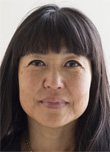How Do We Achieve The Promise Of Using Digital Health Measurement? DATAcc Leads The Way
By Jeanne Chung, program lead, Digital Medicine Society and DATAcc

Digital health measurement, the use of digital technologies to collect clinical and other forms of health data from individuals during activities of daily living, promises to transform health, healthcare delivery, and the development of new medical products. Digital health measures are redefining our understanding of health and disease by changing what we measure and how we measure it. The legacy definitions of health, limited to what we can capture in snapshots within the walls of the clinic, are being reexamined.
In the U.S. today, over half of the population uses digital health tracking tools. Investment in digital health innovation has skyrocketed, hitting nearly $15 billion for the first half of 2021 alone. And three of the biggest companies in the world offer wearable health monitors – Apple’s smartwatch, Amazon’s Halo, and Google’s Fitbit – with two of them (Apple and Google) having secured FDA clearance.
And this is only one small piece of our expanding technology-driven world. We live in the digital era where we generate enormous flows of data all day every day – internet search data, our phone’s GPS data, our fitness tracker connected to a bathroom scale, our purchasing data. Our digital “exhaust” is accumulating fast, and it is replete with data that could be harnessed to extract information about our health and well-being.
The Deluge Of Data
But how will we identify the high-quality, relevant data from this deluge? And how will we ensure these data are harnessed with harmonized approaches to speed the fit-for-purpose use of digital health measurement to improve lives and minimize harm?
We’re at a tipping point in terms of everyday people using health-monitoring technologies like smartwatches to improve their health. In 2015, wearables generated 15 petabytes (or 15 billion gigabytes) per month globally. IDC projects the total universe of healthcare data to grow approximately 400% between 2020 and 2025.
The COVID-19 pandemic changed, perhaps permanently, how we deliver healthcare, conduct health research, and view the role of individuals in managing their health. Telehealth’s twenty-fold increase in usage due to the pandemic is a strong proof point of its utility.
This rapid growth in adoption demonstrates that digital health solutions are not simply cool new shiny things but innovative technologies that have become a necessity for individuals monitoring and managing their own health, as well as a critical component of healthcare access and delivery. Also, digital health measurement can dramatically improve a telehealth consult. Imagine being able to support an explanation of how you feel with a real-time measurement of blood pressure, heart rate, temperature, or glucose level.
Stepping Up To The Challenge
The biggest obstacle our field faces is moving forward intentionally in order to deliver on the great promise of digital health measurement, while also addressing existing issues like uneven access, systemic bias, trust, and security.
Equity in health, healthcare, and health outcomes has been a pressing and persistent challenge for decades. The pandemic has served as a stark reminder of that and has fueled an urgency to address disparities in health outcomes and health determinants. Research by the Rand Corporation shows that the biggest increases in usage were in urban or affluent areas, reminding us of disparities in access.
We need to take steps to mature and democratize digital health measurement so that it can evolve into a powerful new tool to improve the health and lives of every person regardless of their race, income, social status, or geographic location.
It is the perfect time for the field to build the digital health measurement toolbox with intention – and build it right.
Pre-Competitive Collaboration Is The Way Forward
The Digital Health Measurement Collaborative Community (DATAcc) is a recently launched pre-competitive collaboration dedicated to realizing the full potential of digital health measurement as a powerful new tool to drive improvements in health outcomes, health economics, and health equity.
Collaborative communities are pre-competitive collaborations of diverse stakeholders in the medical device ecosystem that are dedicated to improving outcomes and solving challenges in a specific health area. The FDA’s Center for Devices and Radiological Health (CDRH) has designated participation in collaborative communities as a strategic priority.
Hosted by the Digital Medicine Society (DiMe), DATAcc currently comprises over 30 leaders from across the government, non-profit, and private sectors, including healthcare systems, medical technology companies, patient advocates, biopharma, and policy organizations. They understand that, together, they have a unique ability to address pressing problems and impact in the field of digital health measurement in a way they could not accomplish individually.
Understanding the imperative need to address big systemic challenges in the field of digital health measurement, this diverse group of experts has quickly identified digital inclusion as their initial priority. Within that broad priority, they have identified two initial project goals:
- Ensure that a broad spectrum of diverse voices (e.g., different races and ethnicities, people with disabilities, all ages, genders, geographies, socioeconomic status, education levels, health status, and sexual orientations) are included in each stage of the product development life cycle so that diverse populations can utilize and benefit from digital health measurement.
- Standardize the evaluation of inclusivity in the development, deployment, and commercialization of digital health measures across contexts of use.
How You Can Get Involved
DATAcc is designed for impact, focused on scoping initial priorities and goals quickly, working in project “sprints” with key experts to deliver action-oriented, high-impact deliverables in four to six months, and doing it again. As the initial project sprints are underway, DATAcc will welcome 2021’s new member organizations in October, identify the next top priorities within digital health measurement, scope project goals, and set into motion more project sprints.
The field is moving fast. DATAcc will move with it. If you’re interested in learning more about DATAcc, get in touch with us here, whether you’re interested in simply staying up to date on DATAcc or if you’re interested in joining as a member in our 2022 cycle.
About The Author:
 Jeanne Chung is program lead at the Digital Medicine Society (DiMe) and DATAcc. She brings strategic and execution skills from her background in management consulting, investment banking, and entrepreneurship to help advance the work of DiMe and the field at large. DiMe is the professional society serving the digital medicine community, driving scientific progress and broad acceptance of digital medicine to enhance public health.
Jeanne Chung is program lead at the Digital Medicine Society (DiMe) and DATAcc. She brings strategic and execution skills from her background in management consulting, investment banking, and entrepreneurship to help advance the work of DiMe and the field at large. DiMe is the professional society serving the digital medicine community, driving scientific progress and broad acceptance of digital medicine to enhance public health.
